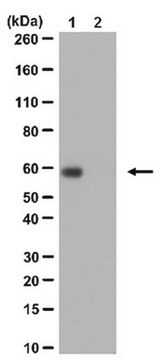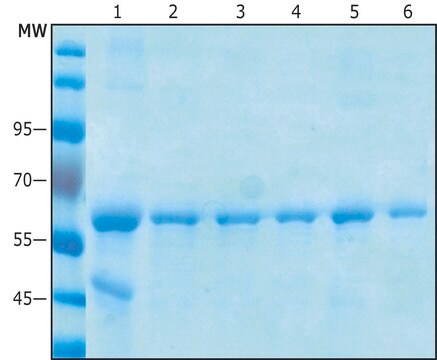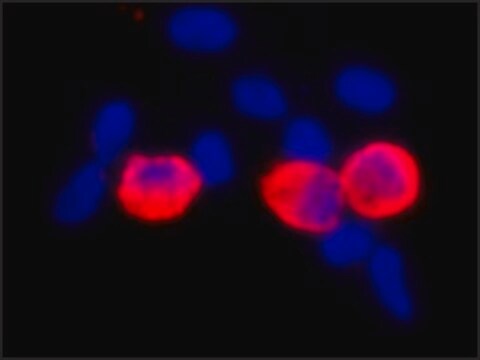ABE25
Anti-acetyl-c-Myc (Lys148) Antibody
from rabbit, purified by affinity chromatography
Sinónimos:
Myc proto-oncogene protein, Class E basic helix-loop-helix protein 39, HLHe39, Proto-oncogene c-Myc, Transcription factor p64, c-MYC
About This Item
Productos recomendados
biological source
rabbit
Quality Level
antibody form
affinity isolated antibody
antibody product type
primary antibodies
clone
polyclonal
purified by
affinity chromatography
species reactivity
human, mouse
species reactivity (predicted by homology)
bovine (based on 100% sequence homology), chimpanzee (based on 100% sequence homology), porcine (based on 100% sequence homology), canine (based on 100% sequence homology), rat (based on 100% sequence homology), rhesus macaque (based on 100% sequence homology), sheep (based on 100% sequence homology)
technique(s)
western blot: suitable
NCBI accession no.
UniProt accession no.
shipped in
wet ice
target post-translational modification
acetylation (Lys148)
Gene Information
bovine ... Myc(511077)
chimpanzee ... Myc(464393)
dog ... Myc(403924)
human ... MYC(4609)
mouse ... Myc(17869)
pig ... Myc(448810)
rat ... Myc(24577)
rhesus monkey ... Myc(694626)
sheep ... Myc(443447)
General description
Specificity
Immunogen
Application
Peptide Inhibition Assay Analysis: A representative lot was used by an independent laboratory in HEK293T cells co-transfected with mouse wildtype c-Myc and P300. (Image courtesy of Dr. Ernest Martinez, Department of Biochemistry, University of California at Riverside.)
Epigenetics & Nuclear Function
Transcription Factors
Quality
Western Blot Analysis: 0.1 µg/mL of this antibody detected c-Myc on 10 µg of transfected HEK293 cell lysates.
Target description
Physical form
Storage and Stability
Analysis Note
Transfected HEK293 cell lysates
Other Notes
Disclaimer
¿No encuentra el producto adecuado?
Pruebe nuestro Herramienta de selección de productos.
Storage Class
12 - Non Combustible Liquids
wgk_germany
WGK 1
flash_point_f
Not applicable
flash_point_c
Not applicable
Certificados de análisis (COA)
Busque Certificados de análisis (COA) introduciendo el número de lote del producto. Los números de lote se encuentran en la etiqueta del producto después de las palabras «Lot» o «Batch»
¿Ya tiene este producto?
Encuentre la documentación para los productos que ha comprado recientemente en la Biblioteca de documentos.
Nuestro equipo de científicos tiene experiencia en todas las áreas de investigación: Ciencias de la vida, Ciencia de los materiales, Síntesis química, Cromatografía, Analítica y muchas otras.
Póngase en contacto con el Servicio técnico







